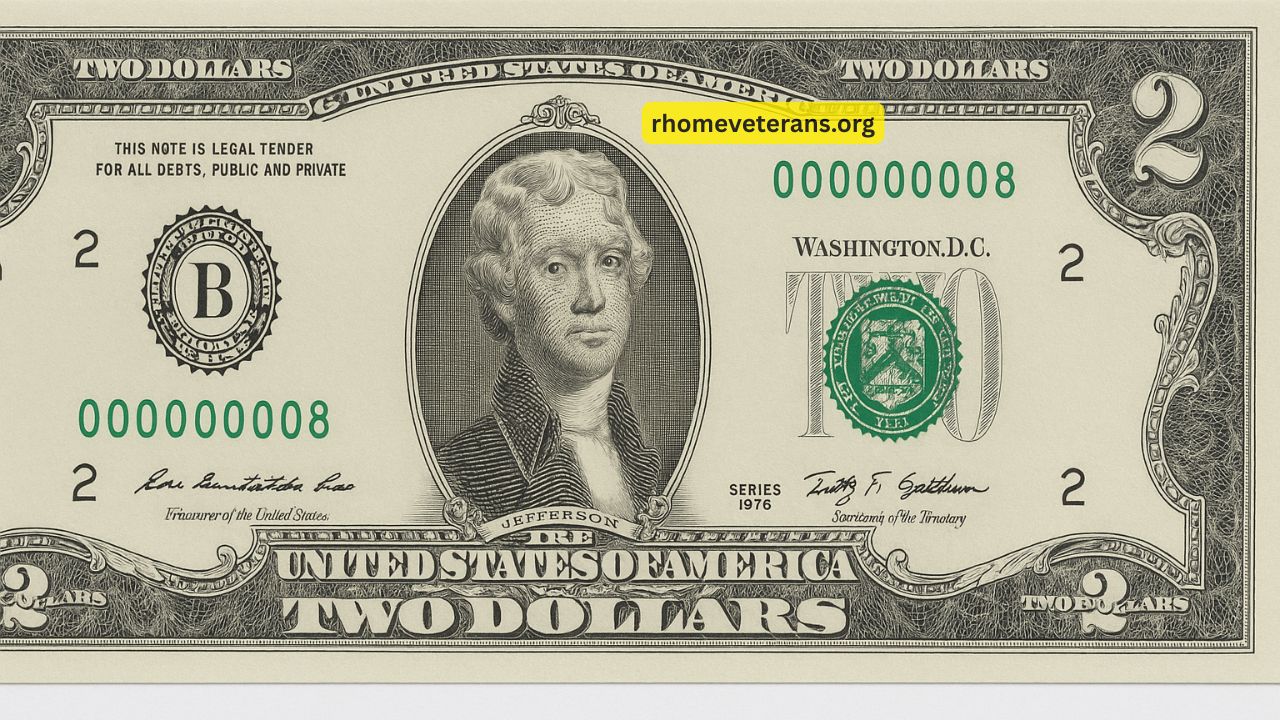In a remarkable turn of events, a rare $2 bill featuring a fancy serial number has captivated collectors by selling for an impressive $4,000 at a recent auction.
This sale underscores the growing interest in unique currency notes and highlights the significant value that certain serial numbers can add to paper money.
Understanding the Value of Fancy Serial Numbers
The term “fancy serial number” refers to a serial number on a banknote that exhibits a unique or aesthetically pleasing pattern.
These patterns can include repeating digits, palindromes, or sequential numbers, making the notes highly desirable among collectors.
In this particular case, the $2 bill’s serial number was 00000008, a remarkably low number that significantly increased its value.
Such low serial numbers are rare and often sought after, as they are typically among the first notes printed in a series.
Details of the Auction
The 2003 series $2 bill bearing the serial number 00000008 was graded at 64 PPQ (Premium Paper Quality) by PCGS, indicating its excellent condition.
The note was sold through Heritage Auctions, a well-known platform for rare collectibles. The final sale price reached $4,000, reflecting the high demand for such unique items.
Factors Contributing to the High Value
Several elements contributed to the impressive sale price of this $2 bill:
- Low Serial Number: Serial numbers like 00000008 are extremely rare and highly coveted.
- Excellent Condition: A grade of 64 PPQ signifies that the note is in near-perfect condition, free from significant handling or wear.
- Collector Demand: The uniqueness of the serial number and the note’s condition created a perfect storm of desirability among collectors.
Comparative Values of Fancy Serial Number Notes
To provide context, here’s a comparison of values for various fancy serial number notes:
| Denomination | Serial Number Type | Estimated Value Range |
|---|---|---|
| $1 | Ladder (12345678) | $500 – $1,300 |
| $2 | Solid (22222222) | $1,500 – $4,600 |
| $5 | Radar (12344321) | $500 – $1,300 |
| $10 | Repeater (12121212) | $600 – $1,200 |
| $20 | Super Radar | $1,000 – $1,800 |
Note: Values are approximate and can vary based on condition and market demand.
Tips for Identifying Valuable $2 Bills
If you’re curious about the potential value of your $2 bills, consider the following:
- Check the Serial Number: Look for patterns such as repeating digits, palindromes, or low numbers.
- Assess the Condition: Notes in pristine condition are more valuable.
- Look for Star Notes: A star symbol at the end of the serial number indicates a replacement note, which can be rare.
- Consult a Professional: If you believe you have a valuable note, seek appraisal from a reputable currency expert or auction house.
The recent sale of a $2 bill with a fancy serial number for $4,000 highlights the significant value that unique serial numbers can add to currency notes.
Collectors are increasingly seeking out such rare items, making it worthwhile to examine any unusual bills you may come across.
Whether you’re a seasoned collector or a curious novice, the world of currency collecting offers fascinating opportunities to uncover hidden treasures.
FAQs
What makes a serial number “fancy”?
A “fancy” serial number exhibits a unique or aesthetically pleasing pattern, such as repeating digits (e.g., 11111111), palindromes (e.g., 12344321), or low numbers (e.g., 00000008).
Are all $2 bills with fancy serial numbers valuable?
Not necessarily. While fancy serial numbers can increase a bill’s value, other factors like the note’s condition, rarity, and demand among collectors also play significant roles.
How can I determine the value of my $2 bill?
To assess your $2 bill’s value, examine its serial number for unique patterns, evaluate its physical condition, and consult with a currency appraisal expert or reputable auction house for a professional evaluation.

